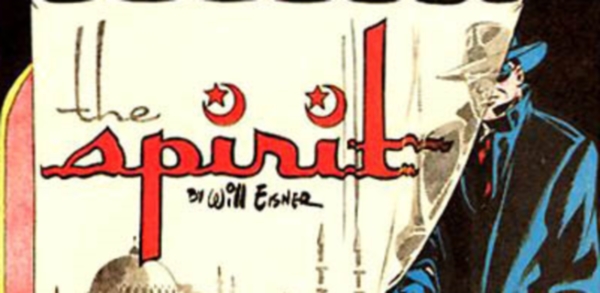
September 28, 2014, by Esther Eidinow
The Spirit and the Argonauts Myth
Helen Lovatt finds some surprising references to classical Greek myth in The Spirit, a recent film by Frank Miller (author of 300)…
When I sat down to watch a film the other night, I was happily anticipating a complete break from work. But perhaps it should not surprise me to find The Spirit (2008), directed and written by Frank Miller, from a comic by Will Eisner, has a substantial classical element. Frank Miller, of course, is also the author of 300. It did surprise me to find that the Argonauts feature heavily: in fact, I think I am on stronger ground here than I was in my previous post on The Hobbit in arguing that this film is a version of the Argonautic myth. When the hero first remembers his childhood sweetheart, Sand Saref, he remembers her reading about Jason and the Argonauts. This is a clear signal that we are meant to think about the story. The twin McGuffins at the centre of the film are ‘the blood of Hercules’ which gives immortality, and… the golden fleece itself! This creates an even stronger link. More tangential, but suggestive, is the fact that when Sand pushes the Spirit out of a window, his fall is broken when his coat snags on the horn of a statue of a giant ram.
The Spirit himself is characterised as a serial womaniser, not unsympathetic, but unable to resist a beautiful woman. He has two main love interests: a Hypsipyle-like doctor figure (Ellen), who rescues and repairs him, and a glamorous femme fatale, not unlike Medea (Sand Saref). The two have been mixed and merged: the father-daughter relationship of Commissioner Dolan and Ellen is potentially threatening, resembling that of Medea/Aeetes or Creusa/Creon (or even Hypsipyle/Thoas)? In fact, it is the death of Sand Saref’s father which alienates her from Denny, and sends her away from the city, perhaps giving her a hint of Hypsipyle: her paradoxical love/hate relationship with the police force may have some similarities with Hypsipyle’s paradoxical relationship to the murderous Lemnian women, as the only one who did not kill her father, and yet their queen.
The film reaches a climax when the fleece itself is used by Sand Saref to protect herself and the Spirit, as they blow the Octopus to smithereens, in a way that eerily evokes the consummation scene in Apollonius, where the fleece itself forms the bed of Jason and Medea. This is as close as the film gets to a resolution of the main love story.
The comparison brings out the way that ancient epic is not about protagonist and antagonist in the way that Hollywood cinema tends to be: as soon as you shoehorn a baddy into the Argonautic plot, it twists almost out of recognition. It is also interesting that the Medea figure is the one who wants to be a hero, and the one obsessed with the golden fleece, while the Jason figure is forced by his semi-divine status to continually destroy himself (perhaps making him more like Herakles, the Herakles of Oeta, suffering on the pyre). Finally, despite his multiple relationships with beautiful women, Jason’s ultimate motivation and loyalty is towards his city.
Despite its noir roots, this is a fundamentally optimistic reading of the myth in which Medea saves rather than killing, Aeetes is friend not foe, Jason is really trying to look after his subjects not himself, and all the negativity is neutralised in the destruction of the antagonist. This is complicated by the plays on superficiality in the names of female characters: Sand Saref evokes typography, Silken Floss is all glossy surface, and Plaster of Paris is an empty reproduction. Does the Spirit himself become little more than a name?
Image credits: https://en.wikipedia.org/wiki/File:Spirit_-_Oct._6,_1946.jpg Cover from October 6th, 1946, comic The Spirit by Will Eisner.
No comments yet, fill out a comment to be the first

Leave a Reply